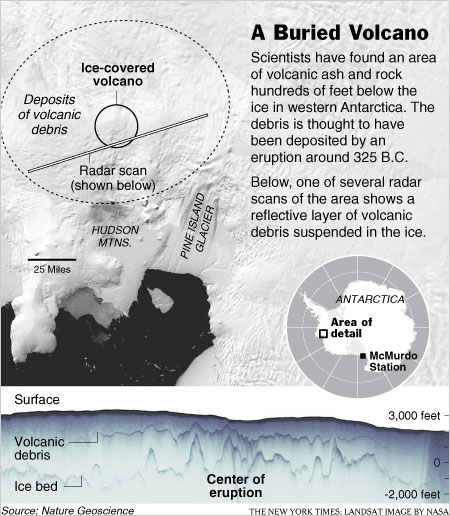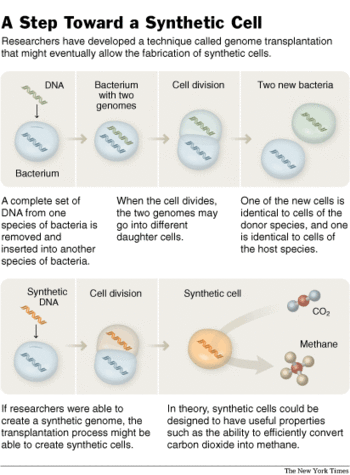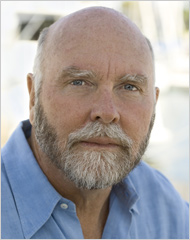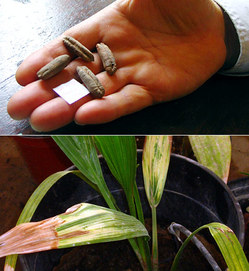I heard last night that Aleksander Solzhenitsyn had died late that on that day, August 3, 2008.
Like all of us, he had his flaws. But he had strong moral courage in standing up against the enslavement of the masses by the communist tyranny of the USSR. For that he paid a huge price, partly in the form of the years of forced labor in the prison camps that he carefully documented in his massive The Gulag Archipelago. (I must admit that I never read The Gulag, although I believe my father, to his credit, read every page.)
I remember my mentor Ben Rogge reading The First Circle and highly recommending it to us. The book’s title is based on Dante’s Inferno which describes the nine circles of hell, where each successive circle assigns increasingly horrendous eternal punishments, for those guilty of increasingly terrible sins. In the first circle, good people born before Jesus, are allowed to pursue their interests much as they had on earth. Socrates, Plato and Aristotle, for instance, engage in eternal dialogue.
In Solzhenitsyn’s version, Stalin allows a group of scientists to have better living conditions, and somewhat more freedom than ordinary Soviet citizens, so long as the scientists make progress on projects that enable Stalin to extend his power.
One of the revelations in the book is that those who imposed the tyranny, had motives that were not always evil. One bureaucratic candidate for villainy, for instance, did bad things, in order to protect his family. At the top there is Stalin, but he is portrayed as insane.
The point is one that Rogge often made—people are pretty much the same everywhere. What mainly explains the differences in different societies are different institutions that provide differing incentives and constraints.
It is a fitting tribute to Solzhenitsyn that the first unabridged English translation of The First Circle will soon be published.
I salute Solzhenitsyn for his insights, and even more, for his courage at standing up against an evil system.
Category: Science
Sprouted “Methuselah” Seed Is 2,000 Years Old
“One of a handful of 2,000-year-old seeds (top) from the fortress of Masada in present-day Israel grew into a date palm plant (bottom) called Methuselah in 2005.” Source of caption and photos: online article quoted and cited below.
The oldest-sprouted seed in the world is a 2,000-year-old plant from Jerusalem, a new study confirms.
“Methuselah,” a 4-foot-tall (1.2-meter-tall) ancestor of the modern date palm, is being grown at a protected laboratory in the Israeli capital.
In 2005 the young plant was coaxed out of a seed recovered in 1963 from Masada, a fortress in present-day Israel where Jewish zealots killed themselves to avoid capture by the Romans in A.D. 70.
For the full story, see:
Anne Minard. “”Methuselah” Tree Grew From 2,000-Year-Old Seed.” National Geographic News online (June 12, 2008), downloaded on 6/19/08 from: http://news.nationalgeographic.com/news/2008/06/080612-oldest-tree.html
Active Volcano in Antarctica: Another Cause for Melting Ice
 Source of graphic: online version of the NYT article quoted and cited below.
Source of graphic: online version of the NYT article quoted and cited below.
(p. A8) Here is another factor that might be contributing to the thinning of some of the Antarctica’s glaciers: volcanoes.
In an article published Sunday on the Web site of the journal Nature Geoscience, Hugh F. J. Corr and David G. Vaughan of the British Antarctic Survey report the identification of a layer of volcanic ash and glass shards frozen within an ice sheet in western Antarctica.
For Antarctica, “This is the first time we have seen a volcano beneath the ice sheet punch a hole through the ice sheet,” Dr. Vaughan said.
Heat from a volcano could still be melting ice and contributing to the thinning and speeding up of the Pine Island Glacier, which passes nearby, but Dr. Vaughan doubted that it could be affecting other glaciers in West Antarctica, which have also thinned in recent years. Most glaciologists, including Dr. Vaughan, say that warmer ocean water is the primary cause.
For the full story, see:
KENNETH CHANG. “Scientists Find Active Volcano In Antarctica.” The New York Times (Mon., January 21, 2008): A8.
Government Post-Doc Funding Creates “Glut” of Scientists
The quotes below from a WSJ summary of a Nov. 16, 2007 The Chronicle of Higher Education article, suggests that we do not need to worry about the sometimes-alleged “shortage” of scientists and engineers:
(p. B14) The federal dollars pumped into university science departments has created more scientists and engineers than the market wants, said Michael S. Teitelbaum, vice president of Alfred P. Sloan Foundation, which sponsors research, at a hearing in Congress last week. Mr. Teitelbaum said the federal government should find a way to adjust how it funds university research so that university departments don’t end up using the extra money to add graduate students and postdoctoral fellows
For the full summary, see:
“The Informed Reader; Science; U.S. Faces a Glut (Really) of Scientists, Engineers.” The Wall Street Journal (Tues., November 13, 2007): B14.
“The Chronically Apalled Must Not Have the Last Word”
(p. A20) Unfortunately, the deniers of differences between the sexes are on the march with powerful allies. In the fall of 2006, the National Academy of Sciences released a recklessly one-sided study, now widely referred to as authoritative, titled “Beyond Bias and Barriers: Fulfilling the Potential of Women in Academic Science and Engineering.” According to the report, differences in cognition between the sexes have no bearing on the dearth of women in academic math, physics and engineering. It is all due to bias. Case closed. The report calls on Congress to hold hearings on gender bias in the sciences and on federal agencies to “move immediately” (emphasis in original) to apply anti-discrimination laws such as Title IX to academic science (but not English) departments. “The time for action is now.”
No it is not. Now is the time for scholars in our universities and in the National Academy of Sciences to defend and support principles of free and objective inquiry. The chronically appalled must not have the last word.
For the full commentary, see:
Christina Hoff Sommers. “Academic Inquisitors.” Wall Street Journal (Tues., Oct. 16, 2007): A.20.
“Sometimes It Pays to Read the Old Literature”
(p. A1) Researchers in New York believe they have solved one of the great mysteries of the flu: Why does the infection spread primarily in the winter months?
The answer, they say, has to do with the virus itself. It is more stable and stays in the air longer when air is cold and dry, the exact conditions for much of the flu season.
. . .
(p. A22) To his surprise, Dr. Palese stumbled upon a solution that appeared to be a good second best.
Reading a paper published in 1919 in the Journal of the American Medical Association on the flu epidemic at Camp Cody in New Mexico, he came upon a key passage: “It is interesting to note that very soon after the epidemic of influenza reached this camp, our laboratory guinea pigs began to die.” At first, the study’s authors wrote, they thought the animals had died from food poisoning. But, they continued, “a necropsy on a dead pig revealed unmistakable signs of pneumonia.”
Dr. Palese bought some guinea pigs and exposed them to the flu virus. Just as the paper suggested, they got the flu and spread it among themselves. So Dr. Palese and his colleagues began their experiments.
. . .
As for Dr. Palese, he was glad he spotted the journal article that mentioned guinea pigs.
“Sometimes it pays to read the old literature,” he said.
For the full story, see:
(Note: ellipses added.)
Government Biologists Spend Big Bucks Protecting Wrong Fish
“Without DNA tests, the rare greenback cutthroat trout, left, and the Colorado River cutthroat fish are difficult to tell apart.” Source of caption and photo: online version of the NYT article quoted and cited below.
(p. 26) DENVER, Oct. 13 (AP) — State and federal biologists, who are smarting from research showing that they may have been protecting the wrong fish the past 20 years, are regrouping in their efforts to restore the rare greenback cutthroat trout to Colorado waters.
Tom Nesler, the state biologist, had hoped to see the fish removed from the endangered species list during his career. He concedes that might not happen if it turns out some of the greenback populations biologists thought they were saving are actually the similar but more common Colorado River cutthroat trout.
A three-year study led by University of Colorado researchers and published in August found that out of nine fish populations believed to be descendants of original greenbacks, five were actually Colorado River cutthroat trout.
The recovery effort was thought to be near its goal of establishing 20 self-sustaining greenback populations.
“Hey, science happens,” said Mr. Nesler with a shrug as he discussed the findings.
. . .
The Colorado Division of Wildlife has spent an average of $320,000 annually for the past five years to restore the greenback. Most of the money has come from state lottery revenue; no state tax dollars have been used.
. . .
“Science is not about proof and certainty,” he said, “it’s about testable hypotheses.”
For the full story, see:
(Note: ellipses added.)
Private Money Supports Quest for Dinosaur DNA
 Source of graphic: the online version of the WSJ article quoted and cited below.
Source of graphic: the online version of the WSJ article quoted and cited below.
(p. A1) JORDAN, Mont. — Prospecting in Montana’s badlands, rock ax in hand, paleontologist Jack Horner picks up a piece of the jawbone of a dinosaur. He examines the splinter, then puts it back and moves on. It isn’t the kind of bone he is looking for.
Prof. Horner is searching for something that many scientists believe no longer exists: dinosaur bones that harbor blood cells, protein and, perhaps, even DNA.
"Most people looking for dinosaurs are looking for beautiful skeletons," he says. "We are looking for information."
. . .
Prof. Horner, a curator at the Museum of the Rockies in Bozeman, is among the world’s most influential and offbeat paleontologists. He pioneered studies of dinosaur parent-(p. A12)ing behavior, species variation and bone cells. He is dyslexic, a former Special Forces operative of the Vietnam War era, a MacArthur Foundation "genius" fellow, and a chaired professor of Montana State University who never finished a formal college degree.
"The lenses that people normally use to look at stuff are broken in Jack," says Mary Schweitzer, an assistant professor of paleontology at North Carolina State University, who has worked with him for years. "That’s what makes Jack such a good scientist. Every now and then, every field should get a renegade weirdo in it who challenges assumptions."
. . .
"The chances of finding any [dinosaur] DNA are pretty low," Prof. Horner acknowledges. "I am still hopeful."
In a field mostly outside the mainstream of federal research funding, Prof. Horner has a knack for attracting private grants. Star Wars producer George Lucas, Qualcomm co-founder Klein Gilhousen and Wade Dokken, a developer of Montana real estate, have contributed toward his research, the university says. Nathan Myhrvold, formerly chief technology officer at Microsoft Corp. and co-founder of Intellectual Ventures LLC, is helping to underwrite this season’s fieldwork.
This summer, in Montana’s Hell Creek Formation, Prof. Horner is searching the last landscape inhabited by dinosaurs. More than 65 million years ago, this plain was a wetland where herds of horned Triceratops watered. Today, it is an arid outwash of boulders, cactus and sage. The red and gray soil is littered with white shards of petrified wood that ring like bone china when tapped together and countless crumbs of dinosaur bone.
. . .
"As long as you are not bound by preconceived ideas of what you can find," Prof. Horner says, "there are an awful lot of things you can discover."
For the full story, see:
(Note: ellipses added.)

 At top, Prof. Horner; at bottom: "Sarah Keenan, 21, an undergraduate at the University of St. Andrews in Scotland who is working this summer for Prof. Horner, covers the fossilized triceratops frill in a protective jacket of plaster." Source of caption and photos: the online version of the WSJ article quoted and cited above.
At top, Prof. Horner; at bottom: "Sarah Keenan, 21, an undergraduate at the University of St. Andrews in Scotland who is working this summer for Prof. Horner, covers the fossilized triceratops frill in a protective jacket of plaster." Source of caption and photos: the online version of the WSJ article quoted and cited above.
Marconi Matters
 Source of book image: http://palmaddict.typepad.com/photos/uncategorized/big_larsonthunderstruckdrm_1.jpg
Source of book image: http://palmaddict.typepad.com/photos/uncategorized/big_larsonthunderstruckdrm_1.jpg
Larson’s book plays off a murder mystery against Marconi as the innovator who brought us communication through the air.
I’m most enthused about hte Marconi part. It shows how he proceeded against the theorists of the day, whose theories told them that what he was trying to do was impossible. He was more entrepreneur, than scientist. And it turned out that it was a good thing that the theoretical scientists did not rule, as they might if all decisions about technology were made by the government.
What happened here is an example of what Taleb would call a Black Swan.
Source:
Larson, Erik. Thunderstruck. New York: Crown, 2006.
Entrepreneur Venter Advances Toward Useful Control of Cells
 Source of graphic: online version of the NYT article quoted and cited below.
Source of graphic: online version of the NYT article quoted and cited below.
Scientists at the institute directed by J. Craig Venter, a pioneer in sequencing the human genome, are reporting that they have successfully transplanted the genome of one species of bacteria into another, an achievement they see as a major step toward creating synthetic forms of life.
Other scientists who did not participate in the research praised the achievement, published yesterday on the Web site of the journal Science. But some expressed skepticism that it was as significant as Dr. Venter said.
His goal is to make cells that might take carbon dioxide out of the atmosphere and produce methane, used as a feedstock for other fuels. Such an achievement might reduce dependency on fossil fuels and strike a blow at global warming.
“We look forward to having the first fuels from synthetic biology certainly within the decade and possibly in half that time,” he said.
Richard Ebright, a molecular biologist at Rutgers University, said the transplantation technique, which leads to the transferred genome’s taking over the host cell, was “a landmark accomplishment.”
“It represents the complete reprogramming of an organism using only a chemical entity,” Dr. Ebright said.
Leroy Hood, a pioneer of the closely related field of systems biology, said Dr. Venter’s report was “a really marvelous kind of technical feat” but just one of a long series of steps required before synthetic chromosomes could be put to use in living cells.
For the full story, see:
 J. Craig Venter. Source of photo: online version of the NYT article quoted and cited above.
J. Craig Venter. Source of photo: online version of the NYT article quoted and cited above.


